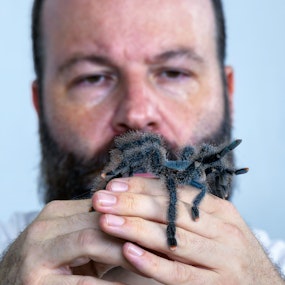The threat of measles at Chicago's O'Hare Airport is a concern due to the potential for international importations of the measles virus. A study conducted by Lee et al. (2018) investigated the international importations of measles virus into the United States during the post-elimination era from 2001 to 2016. The study found that there were numerous cases of measles imported into the United States during this period, highlighting the ongoing risk of measles transmission through international travel.Airports, including O'Hare Airport, serve as major hubs for international travel and can be potential points of entry for infectious diseases such as measles. Measles is highly contagious and can spread rapidly in crowded environments, making airports particularly vulnerable to outbreaks. Infected individuals who are in the early stages of measles infection may not yet be showing symptoms but can still transmit the virus to others, increasing the risk of transmission during travel.To mitigate the threat of measles at O'Hare Airport, it is crucial to implement effective measures for disease surveillance, prevention, and control. This includes ensuring that individuals traveling to and from countries with ongoing measles outbreaks are properly vaccinated and have documentation of their immunization status. Additionally, airport authorities can enhance public health measures such as providing information about measles symptoms and prevention, promoting hand hygiene, and implementing measures to reduce overcrowding and facilitate social distancing.Furthermore, collaboration between public health agencies, airport authorities, and airlines is essential to establish protocols for identifying and managing suspected cases of measles at airports. This includes isolating individuals with suspected measles, conducting contact tracing to identify potentially exposed individuals, and providing appropriate medical care and follow-up for affected individuals.In conclusion, the threat of measles at Chicago's O'Hare Airport is a concern due to the potential for international importations of the virus. Airports, including O'Hare, serve as major hubs for international travel and can be vulnerable to the spread of infectious diseases. Implementing effective measures for disease surveillance, prevention, and control, including vaccination requirements and public health interventions, is crucial to mitigate the threat of measles transmission at airports.This study by Lee et al. (2018) highlights the ongoing risk of measles transmission through international travel and the importance of maintaining high vaccination coverage to prevent measles importations and subsequent outbreaks in the United States. References: Cardoso, J., Almeida, M., Santos, E., Fonseca, D., Sallum, M., Noll, C., … & Vasconcelos, P. (2010). Yellow fever virus inhaemagogus leucocelaenusandaedes serratusmosquitoes, southern brazil, 2008. Emerging Infectious Diseases, 16(12), 1918-1924. https://doi.org/10.3201/eid1612.100608 Costa, Z., Andrade, M., Jayme, V., Almeida, M., Vettorello, K., Mascheretti, M., … & Flannery, B. (2014). Yellow fever outbreaks in unvaccinated populations, brazil, 2008–2009. Plos Neglected Tropical Diseases, 8(3), e2740. https://doi.org/10.1371/journal.pntd.0002740 Cunha, M., Costa, A., Fernandes, N., Guerra, J., Santos, F., Nogueira, J., … & Souza, R. (2019). Epizootics due to yellow fever virus in são paulo state, brazil: viral dissemination to new areas (2016–2017). Scientific Reports, 9(1). https://doi.org/10.1038/s41598-019-41950-3 Hill, S., Souza, R., Thézé, J., Claro, I., Aguiar, R., Abade, L., … & Faria, N. (2020). Genomic surveillance of yellow fever virus epizootic in são paulo, brazil, 2016 – 2018. Plos Pathogens, 16(8), e1008699. https://doi.org/10.1371/journal.ppat.1008699 Hoberg, E. and Brooks, D. (2015). Evolution in action: climate change, biodiversity dynamics and emerging infectious disease. Philosophical Transactions of the Royal Society B Biological Sciences, 370(1665), 20130553. https://doi.org/10.1098/rstb.2013.0553 Hoberg, E., Polley, L., Jenkins, E., Kutz, S., Veitch, A., & Elkin, B. (2008). Integrated approaches and empirical models for investigation of parasitic diseases in northern wildlife. Emerging Infectious Diseases, 14(1), 10-17. https://doi.org/10.3201/eid1401.071119 Laaksonen, S., Venäläinen, A., Kortet, R., Oksanen, A., & Hoberg, E. (2010). Climate change promotes the emergence of serious disease outbreaks of filarioid nematodes. Ecohealth, 7(1), 7-13. https://doi.org/10.1007/s10393-010-0308-z Lee, A., Clemmons, N., Patel, M., & Gastañaduy, P. (2018). International importations of measles virus into the united states during the postelimination era, 2001–2016. The Journal of Infectious Diseases, 219(10), 1616-1623. https://doi.org/10.1093/infdis/jiy701

Sign up to get updates from us
By signing up, you agree to receive email from this podcast.










